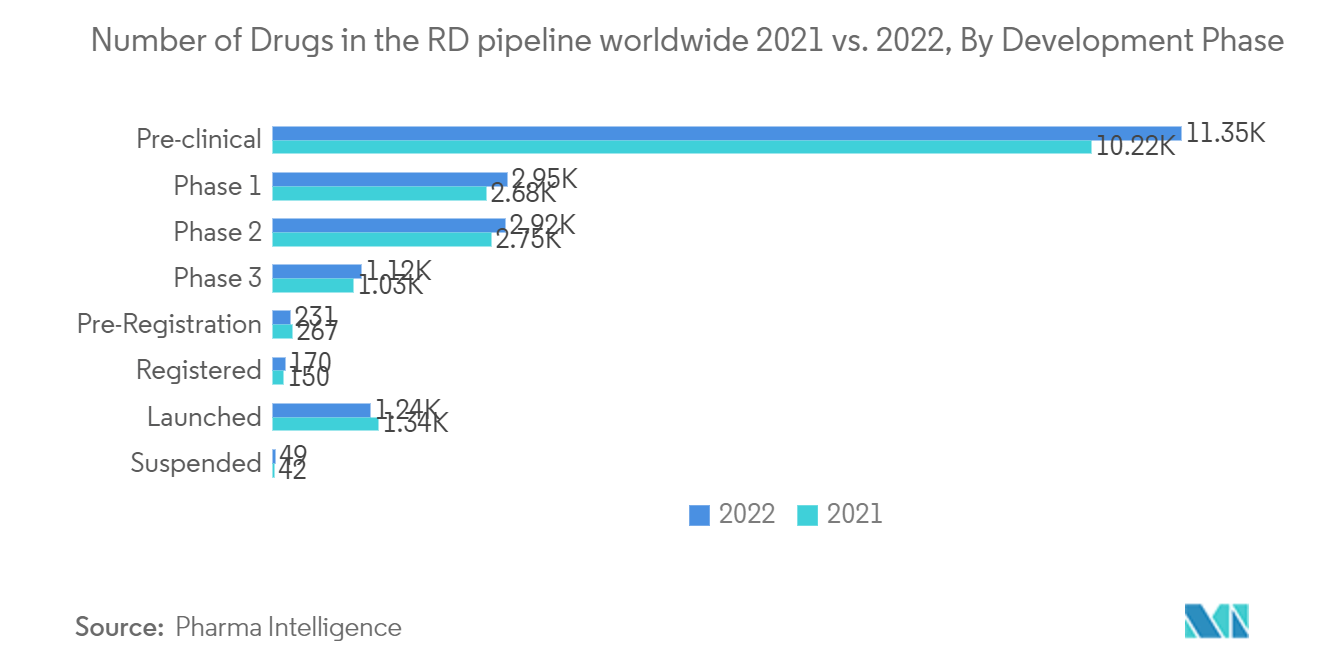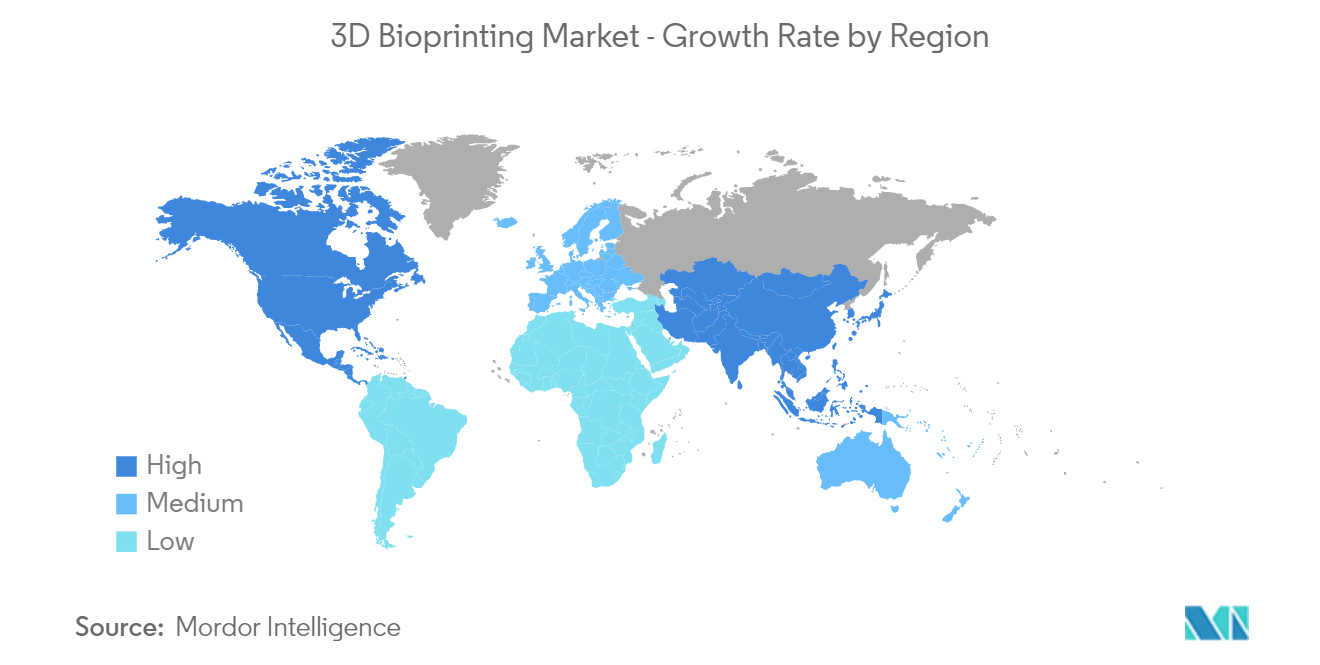Market Trends of 3D Bioprinting Industry
This section covers the major market trends shaping the 3D Bioprinting Market according to our research experts:
Drug Testing and Development to Hold Significant Market Share
- 3D bioprinters are highly important for drug testing and clinical trial applications. They are expected to drastically reduce the need for animal trials, thus being ethically beneficial and cost-effective. Traditionally, clinical trials for new drug development involved testing on animals with artificially-induced affected tissues.
- Traditionally, clinical trials for new drug development involved testing on animals with artificially-induced affected tissues. With the advent of 3D bioprinting, drug developers can address the complications associated with human clinical trials of new drugs by identifying them in a short period (since these can be tested with human-like 3D-printed tissues), thus reducing the losses incurred during late-stage failures.
- Lack of safety and efficacy are the principal causes of the failure of the drugs, which become evident only in Phases II and III of clinical trials.
- The bioprinted organs can identify the side effects of drugs and help medicine developers to streamline safe drug dosages to be administered to humans, as this technology allows for short drug discovery time. According to Pharma Intelligence, at the beginning of 2022, there were 11,351 drugs in the pre-clinical phase of the R&D. The market is expected to witness considerable opportunity over the forecast period.
- The regulatory agency of the US Food and Drug Administration is considering integrating alternatives for drug safety and efficacy assessment, providing scope for the market. Companies like Organovo (US-based) were instrumental in the development of a 3D bioprinter to develop liver and kidney tissue for drug discovery applications.

Asia-Pacific to Witness Significant Growth
- Asia-Pacific is the fastest-growing market for 3D bioprinting, mainly due to a strong existing consumer base that may drive the demand for 3D bioprinting, the massive scope of 3D printing in medical services, increasing R&D for 3D printing, and government support and tax incentives.
- The adoption of 3D printing in China is rapidly picking pace compared to other developed economies, such as North America and Europe, though it was not among the earliest adopters of the technology. The primary factor driving this growth is the support from the Chinese government in the innovation, development, and adoption of the technology across several end-user industries in the country. This trend has helped the research institutes ramp up their developments, significantly boosting the market's growth.
- The country also witnessed various kinds of research in bio-manufacturing. Tsinghua University (Beijing, China) is one of the leading laboratories in the interdisciplinary field of additive manufacturing and 3D bioprinting. Sponsored by the Ministry of Science and Technology of China, the National Natural Science Foundation of China, the National Health Commission of China, and the Beijing Municipal Science & Technology Commission, its bio-manufacturing center is highly dedicated to conducting research involving biomaterials, living cells, proteins, and other biological compounds, as basic building blocks to fabricate biomimetic structures. This research finds applications in various areas, such as tissue engineering, regenerative medicine, disease pathogenesis, drug screening, and tissue/organ-on-a-chip.
- Chinese researchers have rapidly advanced 3D bioprinting technology, such as the liquid-in-liquid printing method. This method involves liquid polymers that create a stable membrane where they meet. The resulting liquid structures, as they claim, can hold their shape for as long as 10 days before they begin to merge. Using this new technique, they could print an assortment of complex shapes. This further offers opportunities to print complex 3D-printed tissues made using living cells.
- According to the Indian Brand Equity Foundation, the healthcare sector is one of the fastest-growing industries in the country. It was estimated to grow threefold to INR 8.6 trillion (USD 133.44 billion) by 2022. In the recent budget, India's public expenditure on healthcare stood at 1.2% as a percentage of the GDP. The Government of India plans to increase public health spending to 2.5% of the GDP by 2025. Such trends in the healthcare sector are expected to boost the market's growth in the country significantly.
- Many Indian start-ups are making bioprinting technology popular through innovative solutions. For instance, Biop, established by BITS Pilani and Goa students, aims to change medical research by manufacturing the equipment and technology for 3D bioprinting. The product can form human tissues with one click, using sensors, actuators, and UV technology to control the 3D bioprinting. The company collaborated with MIT and Harvard for the same. The growth of start-ups, as well as the increasing elderly population and cancer cases, is among the significant factors set to fuel the market's growth over the forecast period.
- The Japanese government estimates that the regenerative medicine industry will record a revenue of JPY 1 trillion by 2030. The New Energy and Industrial Technology Development Organization (NEDO) expects that the emerging and innovative technologies, such as 3D bioprinting, may lead the market in the near future.

